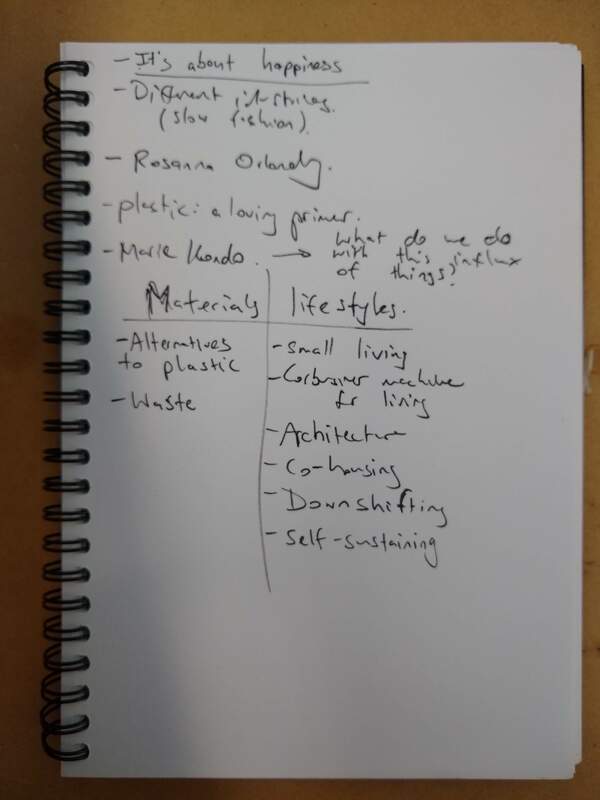|
I discussed the project brief that we're producing individually with Novelyn. She's doing a similar project to mine: reducing stress in the work environment. She is using biophilic design as a way to create a calming, natural environment. I hadn't considered incorporating nature into my project, but it could be a good way to calm the user and slow their pace of life.
0 Comments
I spoke with Emma about my topic. She suggested that I research people who are designing to change materialistic lifestyles, such as the Slow Fashion movement, Rosanna Orlandi and Guiltless Plastic and Marie Kondo. We realised that my topic could either look into materials (through alternatives to plastic, waste etc.) or into lifestyles (small living, downshifting, co-housing etc.). I'm more interested in investigating people's lifestyles and how becoming less materialistic can make people happier. Slow Design is worth investigating... I spoke with Lyn about my topic. He suggested that my project could be designing for people who are already interested in alternative lifestyles, or designing for people who aren't at all interested in alternative lifestyles. The outcome would be quite different for each option. He also suggested I look into Slow Design, the evidence of this thinking (tiny houses etc.), and why people are designing and living this way.
Presented two elevator pitches to the class:
'I want to design a product or system that encourages consumers to develop methods of living with fewer possessions, and teaches consumers about avoiding waste and dealing with a finite world.' 'I want to explore the use of biodegradable alternatives to plastic, and design a product from a biodegradable material that challenges our dependence on plastic, and offers a more sustainable alternative.' Lyn suggested to combine aspects of the two pitches together, to focus the project. Matt said I should "design a neon 'Don't Buy Me' table sign". |

 RSS Feed
RSS Feed